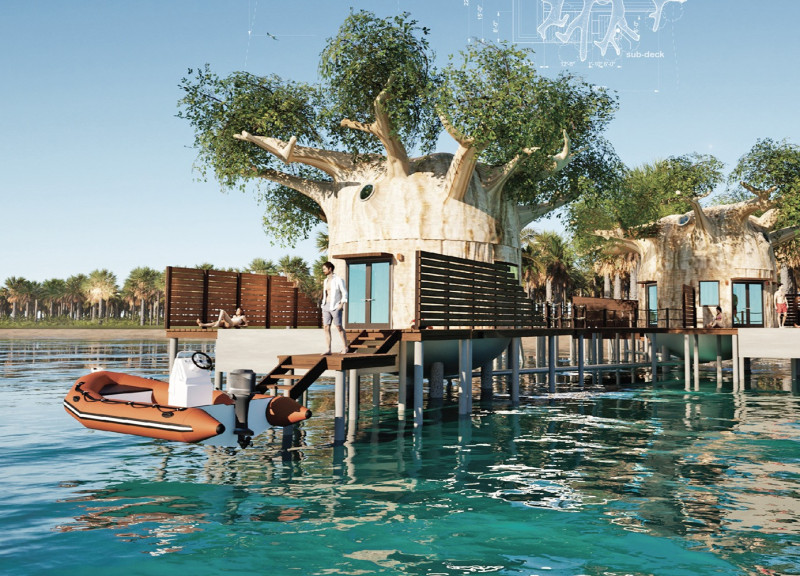5 key facts about this project
At the forefront of this design is the concept of blending indoor and outdoor spaces. Large, strategically placed windows punctuate the façade, inviting natural light to permeate the interiors while fostering a connection with the surrounding environment. This feature enhances the user experience by creating a sense of openness and vitality, which is further complemented by the integration of green spaces throughout the project. Roof gardens, landscaped terraces, and vertical planting systems have been incorporated, demonstrating an innovative approach to urban greenery and promoting biodiversity in an otherwise urban context.
The project's functionality is rooted in its flexibility, accommodating various uses that adapt to the dynamic nature of contemporary life. The thoughtfully designed floor plan allows for open spaces that can be reconfigured for different activities, embodying the concept of multi-use areas. This adaptability not only maximizes the utility of the space but also reflects current trends in architectural design where multi-functionality is paramount.
Materiality plays a crucial role in this project, where sustainable and locally sourced materials have been prioritized. The use of recycled steel for structural elements, sustainably sourced timber for finishes, and energy-efficient glass for the expansive windows underscores a commitment to reducing the building’s carbon footprint. The exterior is characterized by a combination of weathered stone and natural wood, conveying a sense of permanence while harmonizing with the natural environment. This careful selection of materials not only contributes to the visual appeal of the structure but also reinforces its durability and energy efficiency.
Unique design approaches are evident in the incorporation of passive design strategies aimed at enhancing the building's energy performance. For instance, the orientation of the building has been meticulously planned to take advantage of natural ventilation and solar gain, reducing the reliance on artificial heating and cooling systems. The integration of smart building technologies further optimizes energy consumption, positioning the project at the forefront of contemporary sustainable architecture.
The architectural details enhance the overall narrative of the building, from custom-designed fixtures that integrate with the overall aesthetic to carefully considered sightlines that showcase the surrounding landscape. Each element has been meticulously curated to contribute not only to the functionality of the space but also to stimulate an emotional response from its users.
This architecture embodies a forward-thinking approach that resonates with contemporary societal values concerning sustainability, adaptability, and community engagement. By prioritizing a harmonious relationship with the environment and encouraging user interaction, the project stands as a testament to modern architectural ideals.
To explore the depths of this architectural endeavor further, reviewing the architectural plans, architectural sections, and architectural designs can provide deeper insights into the intricacies of the concept and execution. Engaging with these elements will allow a greater appreciation for the thoughtful processes that shaped this remarkable project.


 Teo Damir Biocina
Teo Damir Biocina 




















